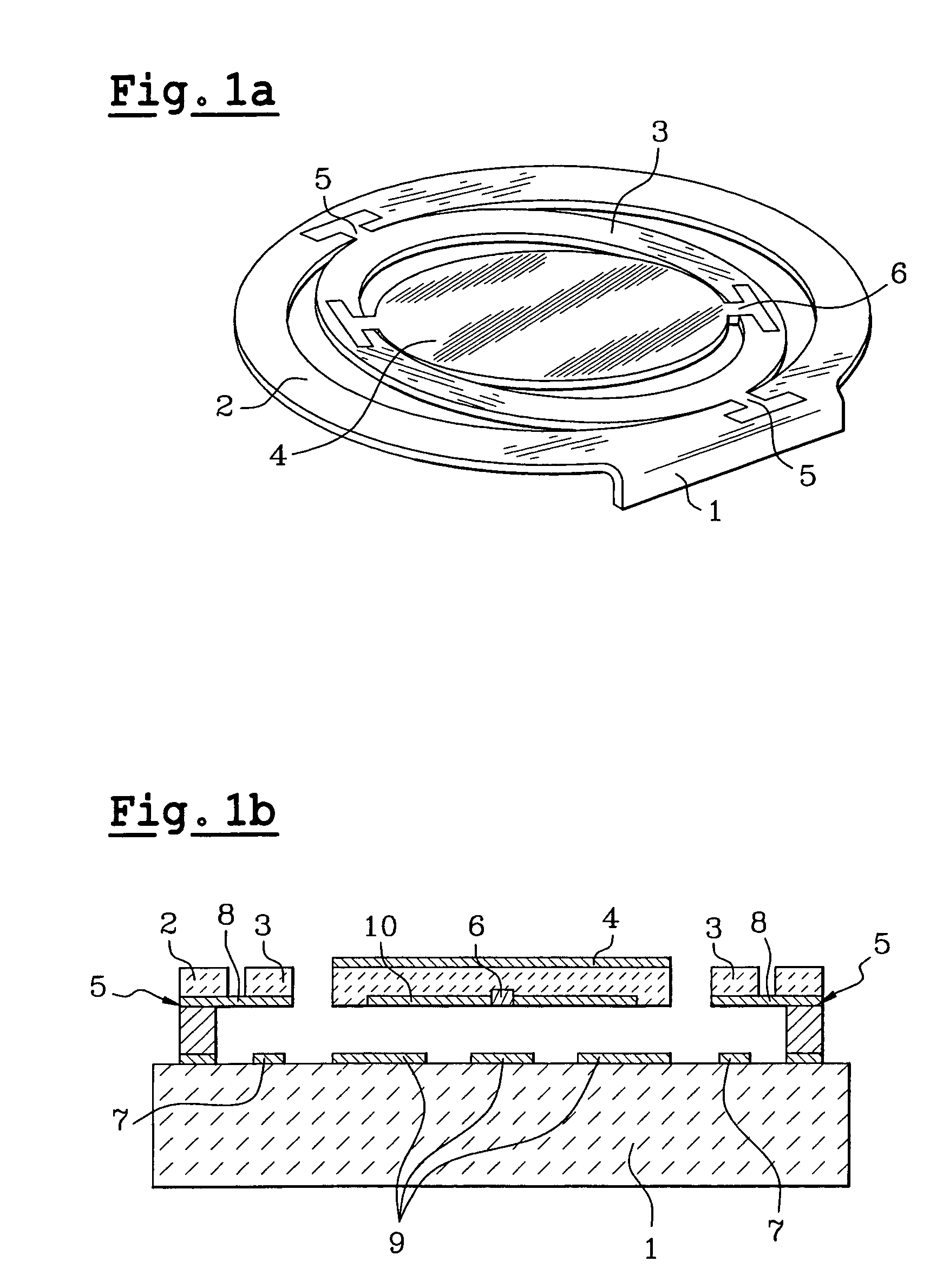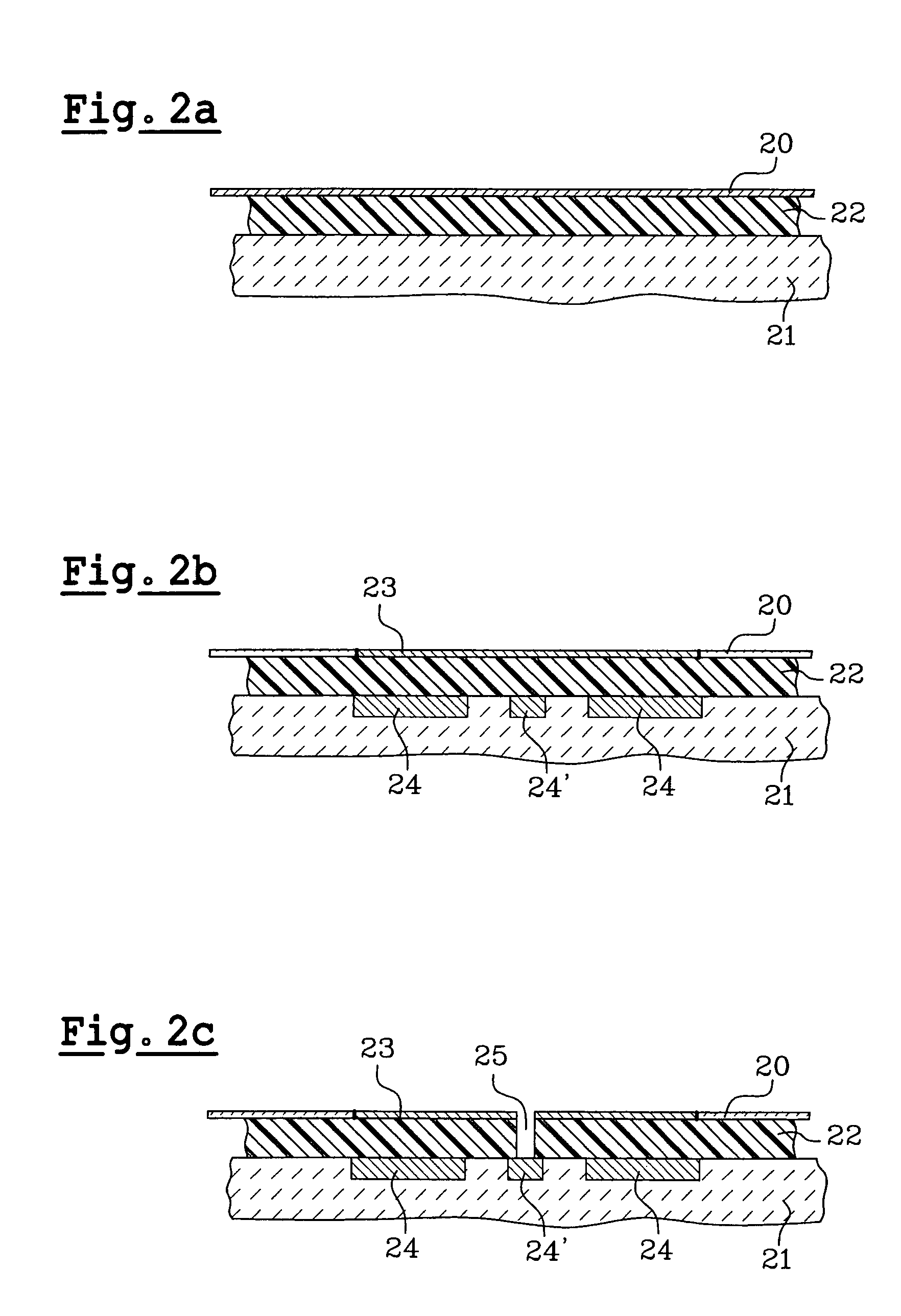Method for making an optical micromirror and micromirror or array of micromirrors obtained by said method
a technology of optical micromirrors and micromirrors, which is applied in the direction of piezoelectric/electrostrictive devices, chemical vapor deposition coatings, decorative arts, etc., can solve the problems of poor mechanical properties of amorphous or polycrystalline layers and unsatisfactory precision, and achieve the effect of greater freedom of realization
- Summary
- Abstract
- Description
- Claims
- Application Information
AI Technical Summary
Benefits of technology
Problems solved by technology
Method used
Image
Examples
first embodiment
[0082]the micro-mirror of the invention that is implemented on a wafer is illustrated in the different FIG. 2.
[0083]For this (see FIG. 2a in cross-section) a SOI (silicon on insulator) wafer is created or a wafer of this type available commercially is used.
[0084]In order to create this type of wafer, a non-doped silicon substrate 21 is used, onto which a dielectric layer 22 of thermal silica is grown. A surface monocrystalline silicon layer 20 is then deposited using any of the known deposition methods and in particular those for transferring a thin layer.
[0085]FIG. 2b represents the realization of the electrodes of the electrical control by the formation of different doped zones 24, 24′, and 23 in the superior part of the non-doped silicon substrate 21 and in the monocrystalline silicon surface layer 20. These zones are obtained by ionic implantation of dopant atoms (generally boron or phosphorus) at different energies according to the desired depth of localization, whether or not ...
second embodiment
[0100]the invention that carries out the steps of the method on two wafers A and B then which transfers these wafers is represented in FIGS. 3, 4, 5.
Preparation of the A Wafer
[0101]Using a mechanical support, for example an undoped silicon wafer 31 (FIG. 3a), the different electrodes 33, 33′ of the fixed part is realized by ion implantation of dopants whether or not followed by thermal annealing (FIG. 3b). FIG. 3c represents a thermal oxidation step of the substrate for forming a thermal oxide layer 32 of a perfectly controlled thickness and generally between 1 and 3 microns; in the course of this step done generally at high temperature, there is a diffusion of the dopants from the implanted zones and an increase of the volume occupied by these zones.
[0102]The steps represented in FIG. 3b and FIG. 3c can be reversed at the cost of augmentation of the implantation energies for realizing the doped zones 33 and 33′ (the ions implanted prior then cross the thermal silica layer).
[0103]FI...
PUM
| Property | Measurement | Unit |
|---|---|---|
| Fraction | aaaaa | aaaaa |
| Time | aaaaa | aaaaa |
| Thickness | aaaaa | aaaaa |
Abstract
Description
Claims
Application Information
 Login to View More
Login to View More - R&D
- Intellectual Property
- Life Sciences
- Materials
- Tech Scout
- Unparalleled Data Quality
- Higher Quality Content
- 60% Fewer Hallucinations
Browse by: Latest US Patents, China's latest patents, Technical Efficacy Thesaurus, Application Domain, Technology Topic, Popular Technical Reports.
© 2025 PatSnap. All rights reserved.Legal|Privacy policy|Modern Slavery Act Transparency Statement|Sitemap|About US| Contact US: help@patsnap.com



